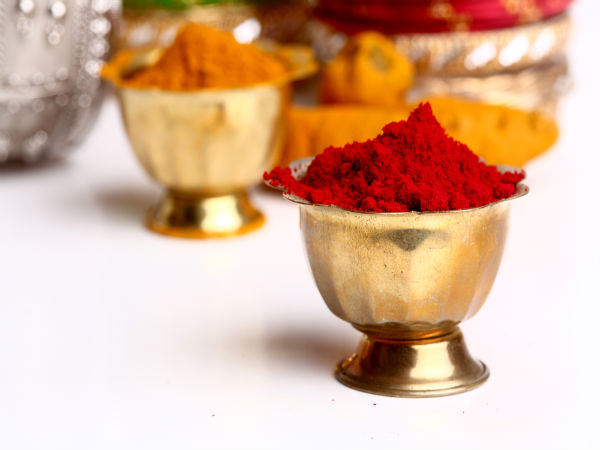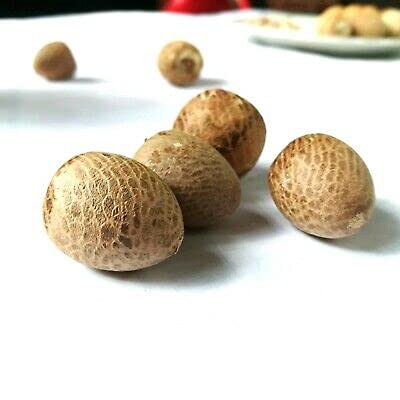What is Kum Kum?
What is Kumkum?
Kumkum is a religious and social symbol of Hinduism. Devotees
wear it during auspicious occasions and also after completing their
daily prayers. In the ancient days, people made Kumkum by mixing
95% turmeric with 5% of limestone.
However, nowadays, many people depend upon artificially manufactured Kumkums. Here, in this article, we will look into the origin, meaning, and significance of applying Kumkum concerning Hinduism.
However, nowadays, many people depend upon artificially manufactured Kumkums. Here, in this article, we will look into the origin, meaning, and significance of applying Kumkum concerning Hinduism.
Kumkum, in Hindi, is Kunkum, and in Sanskrit, it is Kunkuma. In various Indian languages, Kumkum has different names. However, its significance remains the same. Most Hindus apply it on their forehead between their eyebrows. It is an excellent way to improve our focus and concentration. The way devotees smear Kumkum depends on the school of thought they belong. For instance, Shaivaites have three white lines drawn horizontally with a dot of Kumkum in the center.
Apart from men, women and young girls also apply Kumkum. Married women use Vermillion or Sindoor on their foreheads. Young unmarried girls apply Kumkum instead of Bindi. Nowadays, most people rely upon artificial Bindi made from plastic. It is better not to use them because they can lead to the closing of our Third Eye. It is when we apply Kumkum, which is organic, we can imbibe its benefits.
In ancient days, families used to have authentic recipes to make Kumkum. However, not many are aware of that in the present decade. From a religious perspective, devotees offer Kumkum while worshipping Shakti and Lakshmi. It helps us to embrace the blessings from them. During Navratri, devotees apply Kumkum on Devi's forehead, and there are numerous hymns in Hinduism that praise Kumkum. Devotees recite them during Navratri. Some verses suggest Kumkum on Devi's forehead as a symbol of the rising Sun.
There are several books in Hinduism that explain the importance of Kumkum. Sri Sankaracharya has also penned down one such book on the significance of using Kumkum.
Apart from these religious uses, Kumkum also plays a relevant role in Holi. People use Kumkum during the festival of Spring or colors. However, many people, nowadays, use artificial colors made from chemicals during Holi. These chemically manufactured colors can cause irritation and other skin allergies, as well.
Significance of Kumkum in Hinduism: Kumkum is an ingredient that can bring good luck to our lives. It has a plethora of significance, as well. We know that many substances around us can muster positive energies. However, the intensity of their absorption varies from one item to the other. Vibhuti, Sandal Paste, and Kumkum are some of the substances that can get energized quickly. Here, we will look into some of the religious and scientific significances associated with Kumkum in Hinduism.
1. Most Temples have Pranic vibrations present in their premises. Objects in temples can absorb these frequencies. We can find Kumkum in most temples. It would enhance the energy flow within us.
2. Kumkum has numerous health benefits, as well. We know that the primary substance used to make organic Kumkum is turmeric. Turmeric is an ingredient in many Ayurvedic medicines and is beneficial in curing many skin allergies and irritations. When we apply Kumkum on our forehead, it assists in curing these ailments. You can also use Kumkum as a medicinal substance.
3. When we apply Kumkum between our eyebrows on our forehead, it can improve our concentration and focus. When we use Kumkum regularly, it aids us in imbibing calmness and serenity.
4. Our body has seven Chakras that act as sources of energy. When we apply Kumkum on our forehead, it helps in opening our Third Eye Chakra. Chaitanya present in Kumkum assists in attracting Shakti Principles. It will enhance our soul energy and further bring Pavitrakas into our lives.Whereas when we apply artificial Bindi, it leads to the attraction of the Raja-Tama principle. When they enter our body, it can lead to the proliferation of negative energy. It can cause the blockage of the Third Eye Chakra as well.
5. When married women wear Kumkum with a toe ring, it symbolically depicts that she is married. Whenever you are applying Kumkum on your forehead, you have to use the ring finger. It is because it can attract the Absolute Water Principle, which can enhance the energy flow. If someone else is applying Kumkum on your forehead or you are applying it to others, always use the middle finger for the purpose.
6. The fragrance and color of Kumkum also play a vital role. Its fragrance has the ability to increase the vitality of the energy that flows through our bodies. Kumkum's color stands for the Absolute Fire Principle. When we apply Kumkum, it contains the ability to remove the negative energy and enhance the presence of positive vibrations.
7. When we apply Kumkum on our forehead, it is a way of moving away from materialism. It is also a depiction of the significance of non-materialism. Through this, we are giving importance to the creation of detachment with earthly pleasures. It is an excellent way to move away from distress. We can also take steps forward in the direction of embracing the Ultimate Consciousness or the Brahman.
Kumkum, thus, plays a significant role in Hinduism. It has been part of our culture and tradition for
decades. It can help us revitalize the energy flow within our bodies and also gain religious upliftment.
Kumkum can also have a plethora of health benefits.


